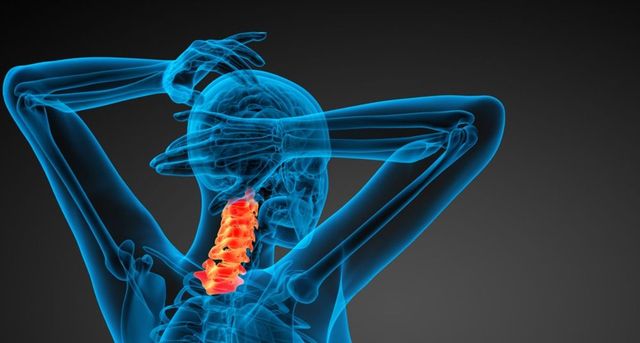Comparing Spinal Decompression and Traditional Back Treatments
Wiki Article
Everything About Spinal Decompression: Efficient Solutions for Spinal Health and Wellness
Spinal decompression treatment has actually emerged as a sensible choice for those seeking remedy for various spinal issues. This non-invasive therapy targets the origin of pain, such as herniated discs and chronic neck and back pain. Understanding its principles and applications can shed light on exactly how it promotes total spinal wellness. What are the details benefits and methods associated with spinal decompression? Discovering these questions might expose useful insights for people considering this technique.Understanding Spinal Decompression Therapy
Exactly what is spinal decompression therapy, and how does it function? Spinal decompression treatment is a non-invasive treatment focused on eliminating stress on the spine's discs and nerves. It utilizes specialized equipment to gently stretch the spine, creating adverse pressure within the discs. This adverse pressure helps with the repositioning of herniated or bulging discs and urges the influx of necessary nutrients and liquids right into the influenced locations.Individuals generally rest on a mechanized table that supports the spine while allowing controlled grip. The treatment can target different spinal problems, consisting of persistent back discomfort, sciatic nerve pain, and disc degeneration. Procedure are typically painless and can last from 30 to 45 minutes. While numerous individuals experience immediate alleviation, a collection of sessions might be recommended for ideal outcomes. Overall, spinal decompression treatment represents a holistic approach to spinal health and wellness, aiming to bring back function and promote overall well-being.
The Scientific Research Behind Spinal Decompression
Spinal decompression treatment is grounded in concepts of biomechanics and physiological response to stress changes within the spine. This non-invasive treatment intends to alleviate spinal disc stress, which can add to discomfort and discomfort. By utilizing grip techniques, spinal decompression develops a negative pressure setting within the intervertebral discs. This unfavorable pressure facilitates the repositioning of herniated or protruding discs and advertises the increase of essential nutrients and liquids, assisting in the healing procedure.Research shows that spinal decompression can cause a rise in disc height, which may minimize nerve root compression. Family Chiropractic. The therapy likewise aims to improve spinal alignment, possibly enhancing general biomechanical feature. Recognizing these scientific concepts assists professionals use spinal decompression effectively, making certain that clients obtain targeted care tailored to their particular spinal problems. In general, the science behind spinal decompression underscores its value in the area of spinal health
Benefits of Spinal Decompression
While numerous individuals look for remedy for persistent back pain, the advantages of spinal decompression expand beyond mere discomfort administration. This therapeutic approach help in improving spinal health by promoting appropriate alignment and lowering pressure on intervertebral discs. Boosted flow is one more remarkable advantage, as spinal decompression facilitates far better blood flow to the spine, beneficial surrounding cells and speeding up recovery processes.In addition, spinal decompression can cause increased versatility and boosted variety of motion, enabling people to participate in day-to-day activities with greater ease. Several people report enhanced overall health and a reduction in stress and anxiety levels, as reducing pain in the back can greatly enhance top quality of life.
Furthermore, spinal decompression might act as a preventive step, assisting to avoid future spinal issues by keeping suitable spinal feature. Overall, the complex benefits of spinal decompression highlight its importance in promoting long-lasting spinal health and wellness and wellness.
Kinds Of Spinal Decompression Strategies
Numerous techniques exist for spinal decompression, each designed to minimize pressure on the spine and improve overall wellness. One usual method is mechanical spinal decompression, which makes use of a traction table to delicately extend the spine, creating adverse stress in the discs. An additional technique is manual spinal decompression, done by a chiropractic practitioner, that applies regulated force to realign the spine and relieve tension.Additionally, there are non-invasive treatments such as inversion therapy, where people hang upside-down to promote spinal elongation. Additionally, workouts that concentrate on strengthening core muscular tissues can contribute to spinal assistance and decompression.
Ultimately, some practitioners utilize advanced modalities like spinal decompression gadgets, which are crafted to offer targeted alleviation. Each technique intends to enhance spinal positioning, minimize pain, and boost wheelchair, satisfying the one-of-a-kind requirements of individuals looking for remedy for spinal discomfort.
What to Expect Throughout a Spinal Decompression Session
During a spinal decompression session, patients can anticipate a series of prep work steps created to assure their convenience and safety and security. The session itself usually involves a mix of therapeutic techniques aimed at alleviating stress on the spine. Understanding these aspects can assist individuals feel more at convenience prior to and throughout the treatment.Therapy Prep Work Steps
As individuals get ready for a spinal decompression session, they can anticipate a very carefully organized process created to ensure their comfort and safety. Originally, professionals will conduct a detailed assessment, evaluating case history and present symptoms to customize the treatment. People might be advised to wear comfy clothes and get rid of any kind of jewelry that could disrupt the procedure. It's likewise typical for medical professionals to discuss the technology and methods utilized in spinal decompression, making certain people understand the process and its benefits. Furthermore, individuals may be instructed to moisturize properly prior to the session. This prep work intends to develop a desirable setting for spinal wellness, permitting individuals to feel safe and notified about their treatment trip.Session Experience Review
A spine decompression session generally unfolds in a regulated and tranquil setting, where people are positioned easily on a specialized table developed for the treatment. The specialist begins by explaining the procedure, ensuring the person understands each action. When settled, mild grip is put on the spine, creating area between the vertebrae to ease stress on the discs and nerves. Clients might really feel a mild extending feeling, yet pain ought to be marginal. Sessions typically last concerning 30 to 45 mins, during which the professional keeps track of the person's feedback. Afterward, clients might receive referrals for follow-up care or workouts to improve outcomes. In general, the experience intends to promote leisure and healing, fostering a feeling of well-being.That Can Take Advantage Of Spinal Decompression?
Who stands to obtain the most from spinal decompression therapy? People struggling with chronic pain in the back, herniated discs, or degenerative disc illness are key candidates for this treatment. Those experiencing sciatic nerve pain or pins and needles in the arm or legs might also profit greatly, as spinal decompression can assist minimize pressure on the spinal nerves. In enhancement, professional athletes recovering from injuries or individuals with postural concerns usually discover alleviation via this treatment.Furthermore, individuals looking for a non-invasive choice to surgery for their spinal health and wellness worries may consider spinal decompression as a practical choice. It is important for possible prospects to seek advice from healthcare experts to establish the suitability of this treatment for their specific conditions. Generally, spinal decompression treatment can give substantial benefits for a varied variety of people, boosting their total high quality of life and advertising better spinal wellness.
Tips for Keeping Spinal Health After Treatment
After going through spinal decompression treatment, maintaining spinal wellness is essential for long-term well-being. Implementing normal exercise regimens, being conscious of posture, and developing an ergonomic workspace can considerably add to a healthier spine. These practices not just sustain healing but additionally assist protect against future problems.
Routine Exercise Routines
Preserving spinal health adhering to therapy is necessary for long-term recovery and overall Family Chiropractic well-being. Regular exercise regimens play a crucial role in this process. Participating in low-impact activities such as swimming, walking, and cycling can assist strengthen the muscle mass supporting the spine, enhance flexibility, and enhance general flexibility. Incorporating core-strengthening workouts is particularly useful, as they provide stability and support to the spine. Furthermore, gentle extending regimens can relieve tension and promote relaxation in the back muscular tissues. It is necessary to get in touch with a health care specialist before starting any kind of new exercise program to assure it straightens with individual healing objectives. Consistency in these activities fosters a positive strategy to spinal health, aiding in the avoidance of future issues.Pose Awareness Strategies
A solid recognition of pose can substantially impact spinal wellness throughout the recuperation procedure. People need to consciously maintain an upright position, making certain that the head is straightened with the spine and shoulders are loosened up. On a regular basis examining in with one's posture throughout the day can help enhance great practices. When sitting, making use of a helpful chair that advertises back assistance is vital. Furthermore, meaning extended periods requires weight circulation in between both feet and engaging the core muscular tissues. Exercising gentle stretches and movement workouts can likewise enhance recognition of position. Mindfulness strategies, such as deep breathing, can help in recognizing stress and promoting leisure in the back. Applying these techniques promotes an aggressive approach to spinal health post-treatment.Ergonomic Work Space Setup
While an ergonomic workspace may look like a deluxe, it is critical for those recuperating from spinal problems. A well-structured atmosphere can considerably aid in maintaining spinal health. Crucial element consist of a chair with lumbar assistance, which encourages appropriate position, and a desk height that permits elbow joints to relax at a 90-degree angle. Additionally, computer displays should go to eye degree to lessen neck stress. Normal breaks to stand and stretch are important, as prolonged resting can intensify pain. Foot rests can also boost circulation and lower pressure on the reduced back. By prioritizing these ergonomic concepts, people can create an encouraging workspace that promotes recovery and advertises long-lasting spinal health, ultimately improving total efficiency and convenience.Regularly Asked Inquiries
The Length Of Time Does Spinal Decompression Therapy Typically Take to Show Results?
Spinal decompression treatment commonly takes several weeks to reveal noticeable results. Many clients experience enhancement within 4 to 6 weeks, relying on specific problems and adherence to the suggested therapy strategy detailed by health care professionals.Exist Any Negative Effects Connected With Spinal Decompression Treatment?
Spinal decompression treatment may create mild negative effects, such as momentary discomfort, muscular tissue spasms, or discomfort after therapy. These symptoms are generally temporary and resolve quickly, permitting individuals to continue their treatment properly.Can Spinal Decompression Therapy Be Done at Home?


Is Spinal Decompression Safe for Pregnant Ladies?
Spinal decompression is usually thought about unsafe for pregnant women due to prospective threats. It is crucial for pregnant mothers to speak with health care experts prior to undertaking any kind of spinal treatments to guarantee the safety of both mom and child.Just how Frequently Should I Undertake Spinal Decompression Treatment for Ideal Results?
Normally, people need to undertake spinal decompression treatment a couple of times a week for finest outcomes. The regularity might differ based on private problems and need to be figured out by a health care expert.Spinal decompression treatment is grounded in concepts of biomechanics and physical feedback to stress modifications within the spinal column. Comprehending these scientific concepts assists practitioners use spinal decompression successfully, making sure that people get targeted treatment tailored to their specific spinal problems. Spinal decompression may offer as a preventive action, helping to prevent future spinal problems by maintaining perfect spinal feature. People seeking a non-invasive option to surgical treatment for their spinal wellness worries might take into consideration spinal decompression as a sensible choice. After undergoing spinal decompression therapy, maintaining spinal wellness is crucial for long-term health.
Report this wiki page